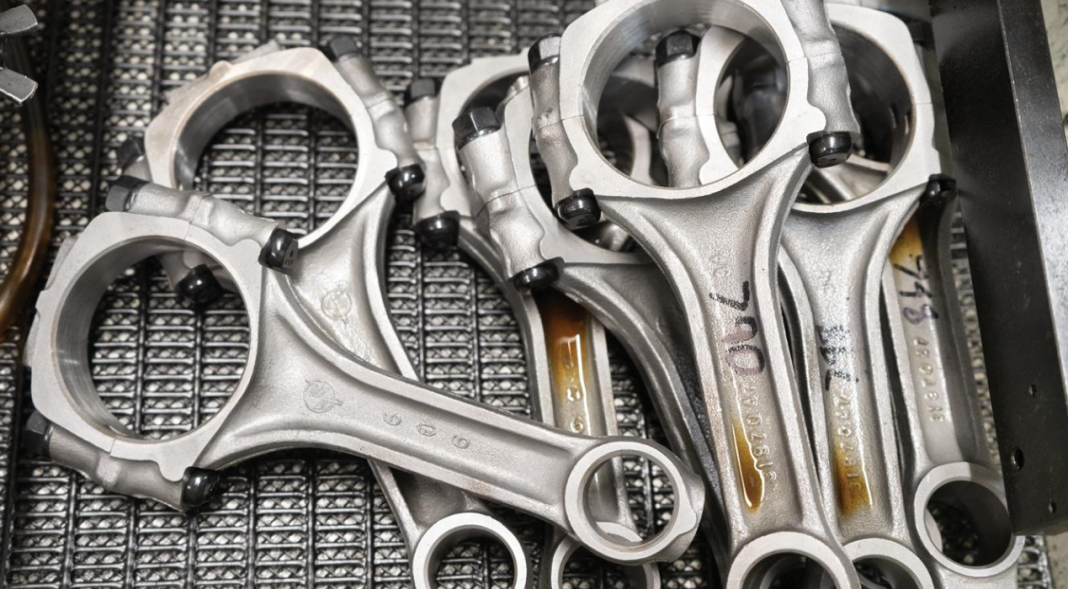Forged connecting rods play a critical role in the inner combustion technique of an engine. The forging technique involves heating a steel fragment to high temperatures till it becomes pliable, then shaping it via hammering or urgent. This approach, which happens under considerable compression, has consequences in a denser and more strong steel framework as compared to forged or machining.
The importance of forged connecting rods lies in their superior power and durability. The forging manner aligns the steel’s grain structure, improving the rod’s resistance to stress and fatigue. This is essential in engines, in which connecting rods should undergo high forces and vibrations at some stage in operation. Follow the link for more information about forged connecting rods, https://www.cxinforging.com/the-advantages-of-using-forged-connecting-rods-in-high-performance-engines/. Forged rods are much less susceptible to failure and may resist more loads, contributing to the engine’s standard reliability and performance.
Safety Considerations for Using Forged Connecting Rods in Engines
Forged connecting rods are important components in high-overall performance and popular engines, supplying extraordinary electricity and reliability. However, their use needs careful interest in safety concerns to ensure certain most effective performance and prevent capability failures. Right here are key safety considerations for the use of forged connecting rods in engines.
Material Quality and Specifications
The safety and reliability of forged connecting rods begin with the best of the materials used. High-grade steel alloys, including chromium-molybdenum or chromium-vanadium, are generally employed because of their advanced strength and stability. It’s crucial to apply substances that meet industry standards and specs to make sure the rods can deal with the engine’s operational stresses.
Proper Manufacturing Processes
The production process for forged connecting rods entails high-strain forging and heat treatments to enhance strength and sturdiness. These techniques must be conducted with precision to make sure the rods meet the desired specifications. Any deviations inside the forging system can result in defects or weaknesses inside the rods, affecting their reliability and safety. Ensuring that the rods are synthetic by way of legitimate suppliers with strict quality control is vital to keep away from capability troubles.
Correct Installation and Torque Specifications
Proper setup of forged connecting rods is crucial for engine protection. At some point of installation, it is critical to comply with the producer’s torque specifications exactly. Incorrect torque settings can lead to insufficient clamping force or high stress at the rods, which may also cause failures. It is essential to use accurate torque equipment and comply with the advocated processes to make sure that the connecting rods are securely hooked up and perform correctly inside their designed limits.
Regular Maintenance and Inspections
Normal protection and inspections are key to ensuring the ongoing safety of forged connecting rods. Through the years, connecting rods can experience wear or damage because of engine operation. Often checking for signs of wear and tear, including cracks, deformation, or unusual noises, can assist in identifying capability issues earlier than they cause failures. Adhering to a habitual maintenance schedule and replacing rods that show signs and symptoms of damage is critical for maintaining engine safety.
Compatibility with Engine Specifications
Forged connecting rods should be compatible with the specific engine specifications and layout parameters. Using rods that are not designed for the particular engine can result in incorrect fitment, which may also bring about operational problems or failures. It is critical to pick connecting rods that meet the engine’s requirements in terms of length, strength, and design. Compatibility guarantees that the rods function effectively within the engine’s layout parameters, enhancing protection and performance.
Adherence To Manufacturer Guidelines
Following the manufacturer’s guidelines and recommendations is critical for the safe use of forged connecting rods. Those recommendations offer important statistics on setup, renovation, and overall performance parameters. Adhering to those pointers ensures that the rods perform as intended and decreases the threat of disasters. Producers’ guidelines are primarily based on extensive testing, making them a valuable aid for ensuring the safe and powerful use of connecting rods.
Remarks
Forged connecting rods are important for ensuring engine reliability and overall performance, however, their secure use calls for cautious interest in numerous elements. Adhering to proper material quality, production tactics, set-up practices, and renovation schedules is crucial. By monitoring overall performance, handling rods correctly, and following manufacturer recommendations, customers can enhance the engine and prevent potential failures. Know-how and respecting the design limits of forged connecting rods guarantee their effective operation and durability, contributing to basic engine reliability.

